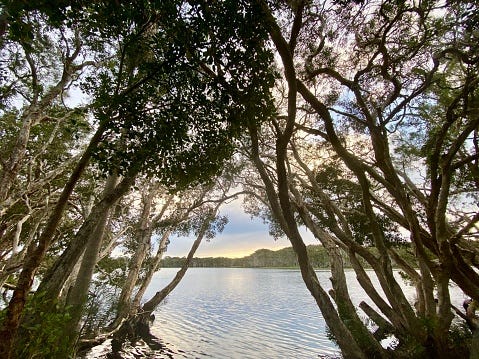Spring is here, so it’s time to get your garden in order! If you live in Melbourne, you’re in luck — there are plenty of beautiful plants that will thrive in your climate. One of our favorites is the Melaleuca, the paperbark tree.
This Australian native is perfect for gardens of all sizes, and it’s a great choice if you’re looking for something that will attract native wildlife. This blog post will share five of our favorite Melaleucas for your Melbourne garden. We’ll also give you tips on how to care for them, so they thrive.
The Different Types of Melaleucas:
There are many different types of Melaleucas, and they come in various shapes and sizes. The most common type of Melaleuca is the paperbark tree, which is native to Australia. Paperbarks have dark green, leathery leaves and white or cream-colored flowers. They grow to be about 30 feet tall and have a trunk diameter of about 1 foot.
The other primary type of Melaleuca is the bottlebrush tree. Bottlebrushes are also native to Australia and get their name from their distinctive flowers, which resemble brushes used for cleaning bottles.
Bottlebrushes can be either evergreen or deciduous, depending on the species. They range in height from 6 to 30 feet tall and have a trunk diameter of up to 2 feet.
Melaleucas are relatively easy to care for and are tolerant of a wide range of conditions. They prefer full sun but will also do well in partial shade. They like well-drained soil and are drought-tolerant once they are established. Melaleucas are generally low-maintenance trees, although they may need occasional pruning to keep them looking their best.

Where to Plant Melaleucas:
Melaleucas, or bottlebrushes, are a staple of the Melbourne garden. They are rugged, drought-resistant and low-maintenance, making them ideal for our climate. But where should you plant them in your garden?
There are a few things to consider when choosing a spot for your Melaleuca. Firstly, they need full sun and well-drained soil. They are also quite salt-tolerant so they can go in coastal gardens.
Once you’ve found the perfect spot, dig a hole twice the pot’s width and just as deep. Melaleucas like their roots to be snug, so don’t plant them too deeply. Backfill the hole with soil and water well.
Now all you need to do is sit back and enjoy your beautiful Melaleuca!
How to Care for Melaleucas:
Melaleucas are tough and hardy plants that need the proper care to thrive. Here are some tips on how to care for your melaleucas:
Watering: Melaleucas need deep watering about once a week during summer. During the winter, they can tolerate more extended periods without water.
Fertilizing: Melaleucas benefit from an annual application of a balanced fertilizer in the spring.
Pruning: Regular pruning is necessary to keep melaleucas looking their best. Prune after flowering has finished for the season, cutting back any leggy or overgrown branches.
Melaleuca Recipes:
Are you looking for something different to add to your cooking repertoire? Why not try cooking with melaleucas? Here are some recipes to get you started:
Melaleuca and lemon myrtle tea: This fragrant and refreshing tea is easy to make — simply steep fresh or dried Melaleuca leaves in boiling water for 3–5 minutes. Add a little lemon myrtle for extra flavor if desired.
Melaleuca and native pepper berry salad: A simple but tasty salad featuring the flavors of the Australian bush! Toss some fresh melaleuca leaves, native pepper berries, diced avocado, and crumbled feta cheese. Drizzle with olive oil and lemon juice to taste.
Grilled fish with melaleuca pesto: This zesty pesto can be made ahead of time and is perfect for livening up grilled fish or chicken. Combine chopped melaleuca leaves, garlic, lemon juice, olive oil, and salt in a food processor or blender and blitz until smooth.
Alternatives to Melaleucas:
A few good alternatives to Melaleucas can be used in the Melbourne garden. Some of these include:
Lilly pilly (Syzygium)
Fringe Myrtle (Calytrix)
Bottlebrush (Callistemon)
Mulga wattle (Acacia aneura)
Each of these plants has similar growth habits and requirements to Melaleucas, so they make suitable substitutes in the garden. They will all reach a similar height and width and have similar flowering patterns. The main difference is in their leaf shape and color — but this can be an excellent way to add some variety to your garden!
Conclusion:
If you’re looking for a few great Melaleuca options to add to your Melbourne garden, we hope this article has helped.
All of the Melaleucas on this list are sure to add beauty and interest to your garden, and they’re all well-suited to the Melbourne climate. So why not give one or two of them a try? You might just be surprised at how much you love them!